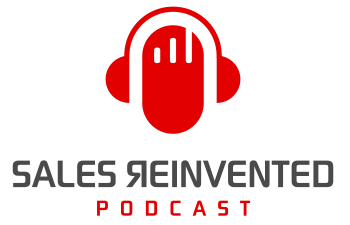Episode #453: Joanne Smith

Meet
Joanne M Smith
Joanne Smith is the President of Price to Profits Consulting and the author of three pricing books. In addition to consulting, she teaches for the Professional Pricing Society and the Institute for the Study of Business Markets. Joanne is the former DuPont Corporate Head of Marketing and Pricing.
Our Mission Is To Change The Negative Perception Of Sales People
Our Vision Is A World Where Selling Is A Profession To Be Proud Of
Outline of This Episode
- (0:52) What are the key differences between negotiation strategy and tactics?
- (1:58) How should companies adapt their pricing strategies during times of uncertainty?
- (3:50) Joanne’s go-to negotiation strategy for high-stakes deals
- (5:45) Joanne’s three favorite negotiation tactics
- (9:13) How important is planning in negotiation strategy and tactics?
- (10:35) Common negotiation strategies (and choosing the best to use)
- (14:40) How can salespeople recognize and counter aggressive negotiation tactics?
- (17:15) Joanne’s top three negotiation strategy and tactics dos and don’ts
- (19:37) Can you share a real-world example of a successful negotiation?
- (15:00) What role does integrity and fairness play in successful negotiations?
Adjusting Your Price Negotiation Strategy in Uncertain Times
Economic fluctuations, tariffs, and shifting market conditions can create significant challenges in price negotiations. Joanne highlights how businesses need to be agile and proactive in adapting their pricing strategies to remain competitive.
She advises sales teams to keep a close watch on external factors and incorporate scenario planning to adjust pricing accordingly. Being prepared to adjust strategies on the fly can present opportunities, especially when competitors are caught off guard by changes in the market.
Effective Price Negotiation Tactics for High-Stakes Deals
When negotiating large or high-stakes deals, preparation and tactics are key to success. Joanne’s go-to strategy involves thorough prequalification of the deal to ensure it’s worth pursuing. This includes asking key questions to assess the likelihood of winning and ensuring both parties’ expectations are aligned.
Once the deal is qualified, Joanne emphasizes the importance of using value-based negotiation tactics, such as highlighting how the offering delivers superior value or addressing price objections with clear, benefit-driven responses.
Joanne’s three favorite negotiation tactics
Joanne Smith shares her top three negotiation tactics that help salespeople navigate price pressure while maintaining value. These proven strategies empower sales teams to handle tough negotiations with confidence and integrity.
- Set Boundaries on Price: Joanne’s first tactic is to assert that if price is the only consideration, the company may not be the best choice. This shifts the conversation away from price and reinforces the value being offered.
- Hypothesis-Driven Value Questions: By asking informed questions like, “Other customers have seen a 10% increase in yield—does that align with your expectations?” Joanne helps uncover the buyer’s true needs and align the price with the value.
- Ask Why Price is Critical: Joanne’s third tactic is asking the buyer, “Why is price so critical to you?” This helps uncover the real reasons behind the buyer’s focus on price, allowing the salesperson to address those underlying needs without compromising value.
By incorporating these three powerful tactics, you can shift the focus away from price and better align your offerings with the value buyers truly need. Joanne’s approach ensures you’re prepared to handle even the most challenging price negotiations effectively.
Joanne’s Real-World Example of Successful Negotiation
Joanne shares an example from her career where she helped a client secure a crucial deal by applying her negotiation strategy and tactics. The customer, a key account, was trying to push back on price by employing aggressive tactics.
However, Joanne coached her client to assess the buyer’s true motivations, which led them to realize the buyer was not actually focused on price. By holding firm, offering a fair price, and highlighting their competitive advantages, they successfully retained the account and even increased their revenue.
This story illustrates the importance of confidence, preparation, and understanding the buyer’s true intentions.
Connect with Joanne Smith
- Connect on LinkedIn
Connect With Paul Watts
Audio Production and Show notes by
PODCAST FAST TRACK
https://www.podcastfasttrack.com
Learn More About Joanne Smith
What was a pivotal moment in your career that shaped your approach to negotiation, and how did it influence your strategy and tactics?
I ran several businesses and even consulted in business strategy quite successfully, but in mid-2025 I was asked to start up the Pricing Competency initiative for the Global DuPont Company. I did this with enormous success, yet as I developed strategies and approaches, I had an eye opening moment (really a series of moments) where I realized that I had been previously treating price as the last step of product creation to sale (i.e., the tail on the dog). I realized the ‘tail’ was often wagging the dog (i.e., biggest impact to our earnings). Going forward, I placed far more effort on understanding what the fair-value price should be and further, questioned what is it about my offering or customer experience that is holding me back from achieiving an even higher price.
What is the most challenging negotiation you’ve ever faced, and what strategy or tactic helped you turn it into a win?
When it comes to those tough price discussions that seem to be going no where, there comes a time where you might have to respectfully say “It only price matters in this deal, we might not be your best choice for this deal”, or the consistently hold to the position “Let’s look at the scope of the deal, and determine what we can remove to get you that lower price”. The key is to demonstrate that you do know what your offering is worth, you have integrity and would sooner walk away from a deal than to accept an unfair low price.
What are your top three must-have tools, frameworks, or resources that sales professionals should use to improve their negotiation skills?
Let me give you a client example – one where I guided the sales person. It was the suppliers largest global account (20% of revenue), the business was put out for bid – winner take all. My client submitted a modest fair price increase which was meant with significant customer push back that the supplier was too high in price and they where looking elsewhere. I quickly assessed the situation using a handful of questions to the sales person, and with great confidence convinced the supplier that the buyer’s response was just tactics and not a credible threat. We stuck to the price increase, reminded the customer of the fairness of our price and then put a ‘good to the end of the month’ time restriction on the bid. My client succeeded in capturing this price increase. With buyer behaviors evolving and AI playing a larger role in sales, how do you see negotiation strategies and tactics changing in the future? What should sales professionals do to stay ahead?
What are your top three must-have tools, frameworks, or resources that sales professionals should use to improve their negotiation skills?
1st, and most critical, they must understand that ‘every deal affects every future deal’. In other words, if they are pushed into over-discounting, they are teaching their customers to continually push them around on price. Further, it’s likely these buyers will tell you competition about your low price offer in order to encourage your competitors to lower their prices as well.
2nd: Doing a ‘pre-qualification analysis’ for new customers to assure yourself that you truly have a chance to win this deal. With a few simple questions you can learn to focus your efforts on winnable deals.
3rd. Doing a Pre-Negotiation Analysis/Strategy especially for the bigger/tougher deals or when you are raising prices on existing business. Being prepared and adjusting your strategy and tactics to a deal is essential to winning the deal at the highest fair price.
With buyer behaviors evolving and AI playing a larger role in sales, how do you see negotiation strategies and tactics changing in the future? What should sales professionals do to stay ahead?
The primary trend I see is a push by buyers to treat all suppliers as if they are commodities and it’s all about price, furthre with AI these buyers may have more knowledge about alternative suppliers going into the negotiation. To combat this trend, Sales need to enhance their ability to value sell – Turn the price discussion into a value discussion and they be able to credibly talk about their value over and above your competition. To be most effective, sales leaders should partner with their marketing group to quantify your offerings value along with the financial benefit the customer receives. When this is done well, it greatly enhances the sales team’s ability to value-sell tailored to their specific customers needs.
What’s are some simple but powerful negotiation tactics that most salespeople overlook?
1. To often salespeople talk only about their offerings unique features (i.e., a supplier centric approach) rather they should shift this to a customer- focused discussion (e.g., We help you (the customer), make more money by improving you with 10% higher …. thus saving you $Y per year. Our unique features of … allow us to deliver this value). 2. Getting a customer to open up about their problems/situation for which your offering helps them. Many times, customers shut down these discussions, but a smart salespersons can use a hypothesis driven approach’s to tease out critical information.
Share This Episode, Choose Your Platform!
